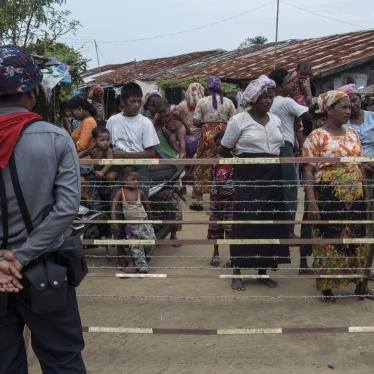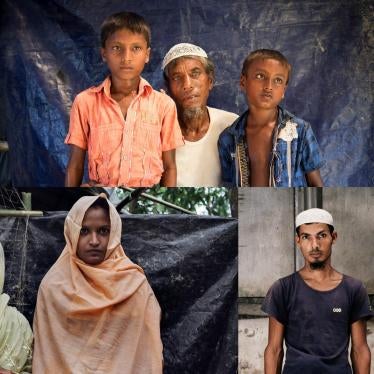The causeway that links northern Sri Lanka’s mainland to Mannar Island is lined with vast military barracks. They have a nicely settled air about them, with painted flowerpots out front and T-shirts drying on clotheslines.
Between the army camps are red-roofed cottages peeping through coconut groves and forests. There are no paved walkways—just dust, mud, and some scraggly vegetable patches. They are part of a housing project that the Indian government funded to rehabilitate those displaced by Sri Lanka’s devastating civil war, which raged between 1983 to 2009 and saw the Liberation Tigers of Tamil Eelam (LTTE) unsuccessfully attempt to forge an independent Tamil nation alongside the Sinhalese majority state.
For many Tamils, the barracks are symbols of the defeat: the mainly Sinhalese military sprawls on land that once belonged to the Tamil community—it had been held by the LTTE for decades—while displaced villagers barely eke out a living nearby. They are also reminders of the terrifying last months of the war.
As the Sri Lankan army advanced on the area in 2008, it pushed the LTTE back into an increasingly small space. Government forces repeatedly and indiscriminately shelled densely populated areas, sometimes using heavy artillery. In 2009, as the territory controlled by the LTTE shrank, the government declared several “safe zones,” in which civilians could supposedly seek shelter. But government forces continued attacking these areas, justifying the strategy by claiming that the LTTE had deliberately moved into protected zones. Civilians recall scrambling for shelter and ending up crouched in low trenches on the beach, with just palm fronds for cover.
Thousands of Tamil families—some voluntarily, some against their will—thus found themselves stuck with the dwindling LTTE forces on a narrow strip of land on Sri Lanka's northeastern coast. The LTTE used them as human shields, even shooting some of those who tried to flee from the war zone to government-held territory.
The government's decision in September 2008 to order humanitarian agencies out of the LTTE-controlled area greatly exacerbated their plight. Ongoing fighting, lack of oversight, and the manipulation of aid deliveries by government and LTTE forces contributed to a deepening humanitarian crisis, with major shortages of food, water, shelter, and medicines.
After the war ended, nearly 300,000 Tamils who had been caught up in the fighting were detained in military-guarded camps in the four northern districts of Vavuniya, Mannar, Jaffna, and Trincomalee. The military sifted through them to identify LTTE combatants. As non-militant families gradually began to return to their villages, many found that their homes had been destroyed or that their farmland was now part of a closed military zone, leaving thousands without shelter. Some sought refuge with relatives. Others were relieved to accept one of the 50,000 “Indian” cottages.
Sri Lankan Spring
Off-limits for years, first because of the LTTE occupation and later because the government monitored access to the former battleground, Human Rights Watch finally visited northern Sri Lanka in January. Signs of progress were everywhere. The roads were freshly paved, and bridges had been rebuilt. Banks have opened branches, shopping malls are being planned, and resorts for tourists are in the works.
Many of the Tamils we met openly criticized the LTTE, which dragged them and their children into the war. Former combatants do not appear to be particularly popular. One Tamil woman laughed and said that the senior LTTE cadre used to be bullies with guns, but now that they have been defeated, people like to see them isolated.
But plenty of the people we talked to also despaired over the Sinhala triumphalism that followed the defeat of the LTTE. Rather than national reconcilation, former President Mahinda Rajapaksa and his government behaved as if it were not the LTTE that was defeated but the entire Tamil population. The army set up numerous checkpoints in Tamil areas and instituted intrusive surveillance. Tamils lived with the constant threat of arbitrary arrest and abuse. They spoke of the ubiquitous white vans, civilian vehicles used by security forces to abduct suspected LTTE supporters, who were then brutally tortured in custody. Memorials to fallen LTTE fighters were reduced to rubble and commemorations were banned. It was awful, a Tamil woman recalled. “They came to celebrate the bravery of their dead, while we couldn’t even mourn for our lost ones.”
To be sure, Rajapaksa’s behavior did not cost him popularity with Sri Lanka’s non-Tamil population. And he might have governed for years as the man who ended a 26-year war. But his administration, increasingly authoritarian, corrupt, and nepotistic, lost the presidential election in January 2015. His former subordinate, Prime Minister Maithripala Sirisena, broke ranks and ran a campaign calling for reform.
Now president, Sirisena has reversed a number of the most abusive practices, dismantling checkpoints, restricting the military to barracks, and otherwise calling off the spooks. According to local civil society groups, police intimidation of critics and activists has subsided. And commemorations for the Tamil dead are now permitted. The government has also taken steps to resolve some of the long-standing cases tied up in the draconian Prevention of Terrorism Act, which allows arrests for unspecified “unlawful activities” without warrant and permits detention for up to 18 months without producing the suspect before a court. The government has released some detainees who underwent rehabilitation, and in November 2015, it released previously unpublished reports by two important government commissions on “disappearances” and laws-of-war violations during the civil war.
Late last year, Human Rights Watch members were invited to meet the prime minister and other members of the cabinet in Colombo, and were even interviewed on government-run television. For the first time in many years, Human Rights Watch was likewise able to openly meet activists in Colombo and Tamil areas of the north. On our visit there, we were not stopped or questioned. At one government office, we watched as the staff stood to sing the national anthem in Tamil, something that had previously been banned.
Justice For All
Underneath all the progress, though, there are still worrying signs. It is widely presumed that there were instances of human rights violations and war crimes during the civil war. The Rajapaksa government refused to seriously investigate these claims, and it asserted there were zero civilian casualties. It also accused domestic and international rights monitors of being LTTE supporters.
After the Rajapaksa government refused to act on two U.S.-sponsored United Nations Human Rights Council resolutions urging accountability, the UN Office of the High Commissioner for Human Rights was asked to investigate. It offered a devastating report in late 2015, which put pressure on the new government to agree to a consensus resolution at the Human Rights Council. The resolution passed on October 1, 2015, and calls for the creation of a judicial process to investigate and prosecute wartime abuses. The process is to include foreign judges and prosecutors to avoid politicization.
Since then, though, the Sirisena government has backtracked. On January 21, Sirisena told the BBC that he would “never agree to international involvement,” saying that, “We have more than enough specialists, experts, and knowledgeable people in our country to solve our internal issues.”
His statement directly contradicts the UN resolution—which Sri Lanka co-sponsored. In response to the statement, on January 28, a group of 144 prominent Sri Lankan individuals and organizations wrote a letter to the president stating that for the justice process to be credible, it must include independent foreign experts in the role of investigators, prosecutors, defense counsel, and judges. “It is widely acknowledged that the victim communities in Sri Lanka consider a purely domestic process to be untrustworthy,” they wrote.
For now, victims are distraught. Families of the disappeared are still looking for their loved ones, visiting officials to plead their cases, and appearing before commissions. A government-appointed task force on consultations on transitional justice issues has made little headway. These victims need urgent assistance and counseling. The injured need rehabilitation. “There are so many with no legs, no arms, no eyes,” one activist said. With many of the men dead, missing, or detained after the conflict, a large number of households are headed by women. Resettled into housing projects, they are struggling to make ends meet.
But meeting those immediate needs is not enough. Victims also need justice and accountability. Ananthi Sasitharan, a member of the northern provincial council, told us that her husband, a senior LTTE official, is still missing nearly seven years after he surrendered. “The government still needs to remember the root causes that led to the mass killings. The army is still occupying our land. People are fearful. Justice is what we want. Livelihood is what we need.”
The Sri Lankan government has a historic opportunity to mend a nation broken by war. But it will only succeed if accountability triumphs over old distrust. After a recent visit to Sri Lanka, the UN High Commissioner for Human Rights Zeid Ra'ad Al Hussein, on February 9, warned against “voices of hatred and bigotry.”
Back in Ganeshapuram in Mannar district, 71 houses are allocated to families of the injured and the dead. To get to the desolate settlement, we had to drive past an army camp, which included a lovely coconut grove. Life is hard, one woman told us, as she proudly showed her vegetable garden, a patch of green barely taking root in the dust. Like in Sri Lanka today, such signs of hope need nurturing.











